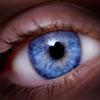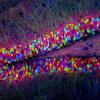What effect does lithium orotate have on OCD?
I would also like to know this. I found some information on Wikipedia, but
I don't know enough to interpret it correctly. Some citations:
SerotoninOCD has been linked to abnormalities with the neurotransmitter serotonin, although it could be either a cause or an effect of these abnormalities. Serotonin is thought to have a role in regulating anxiety. To send chemical messages from one neuron to another, serotonin must bind to the receptor sites located on the neighboring nerve cell. It is hypothesized that the serotonin receptors of OCD sufferers may be relatively understimulated.
Lithium: upon ingestion, lithium becomes widely distributed in the central nervous system and interacts with a number of neurotransmitters and receptors, decreasing norepinephrine release and increasing serotonin synthesis.
InositolOCD: In a single double-blind study on 13 patients, myo-inositol (18 grams daily) has been found to reduce the symptoms of obsessive-compulsive disorder (OCD) significantly, with effectiveness equal to SSRIs and virtually without side-effects. In a double-blind, controlled trial, myo-inositol (18 grams daily) was superior to fluvoxamine for decreasing the number of panic attacks and other side-effects.
Lithium: older research suggests that lithium functions primarily by decreasing myo-inositol concentrations in bipolar patients; however the conclusions of this research are unsupported and have been questioned. Other studies suggest that lithium treatment may further inhibit the enzyme inositol monophosphatase, leading to higher intracellular levels of inositol triphosphate, an effect that was enhanced further by administration of an inositol triphosphate reuptake inhibitor.
Glutamate/NMDA receptorsOCD involves several different receptors, mostly H2, M4, NK1, NMDA, and non-NMDA glutamate receptors. The receptors 5-HT1D, 5-HT2C, and the μ opioid receptor exert a secondary effect. The H2, M4, NK1, and non-NMDA glutamate receptors are active in the striatum, whereas the NMDA receptors are active in the cingulate cortex.
The activity of certain receptors is positively correlated to the severity of OCD, whereas the activity of certain other receptors is negatively correlated to the severity of OCD. Correlations where activity is positively correlated to severity include the histamine receptor (H2); the Muscarinic acetylcholine receptor(M4); the Tachykinin receptor (NK1); and non-NMDA glutamate receptors. Correlations where activity is negatively correlated to severity include the NMDA receptor (NMDA); the Mu opioid receptor (μ opioid); and two types of 5-HT receptors (5-HT1D and 5-HT2C) The central dysfunction of OCD may involve the receptors nk1, non-NMDA glutamate receptors, and NMDA, whereas the other receptors could simply exert secondary modulatory effect
Lithium: the excitatory neurotransmitter glutamate could be involved in the effect of lithium as other mood stabilizers such as valproate and lamotrigine exert influence over glutamate. It was also reported that NMDA receptor blockage augments antidepressant-like effects of lithium in the mouse forced swimming test, indicating the possible involvement of NMDA receptor/NO signaling in the action of lithium in this animal model of learned helplessness.





















































